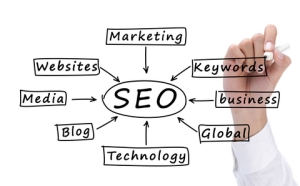Everyday more companies and more consumers are joining the social media fray. What does the increased noise level mean? Can you actually measure whether the investment has any impact on results?
Extent of Company Social Media Today
In June 2012 a two-day conference was held in New York City to share and discuss the State of Social Media. The conference served as a forum to discuss the results of data produced by a survey conducted by Useful Social Media from 650 participating corporations.
71% of the survey respondents said that they were responsible for developing and executing the company social media activity using a team of between 2 and 4 team staff members on a part-time basis.
Not surprisingly, 90% of respondents use Facebook for their company and 89% have a Twitter presence. These two are the unrivalled leaders for companies – and an incredible proportion of
businesses have taken the plunge and set up accounts on these two sites. YouTube and LinkedIn were also popular with 75% acknowledging regular participation. Also, 49% disclosed that they have created and promote their own blog.
Measuring Return On Investment in Social Media
Less than a third of respondents feel that they are accurately measuring the impact of their social media activity, and only 40% of respondents say they measure social media ROI (with only 23% confident they’re getting this measurement correct). Early measurement shows:
1. Activity/Engagement 14%
2. Conversion to leads or sales of those engaged 6 to 7%
3. Development of recommendations or customer testimonials from evangelists 2%
What is Next in Social Media?
The most popular replies from survey respondents about what to expect next year are:
1. 200% more companies will use social media to develop better products
2. A third more companies will offer customer service delivery through social media
3. 95% more companies expect to use social media for market research in determining future offerings.
What would participants like to be able to measure in the future? The answer is activity, growth in followers, increase in web traffic, translation to leads, and conversion to sales.
You can download a free copy of the full survey report @ www.usefulsocialmedia.com






